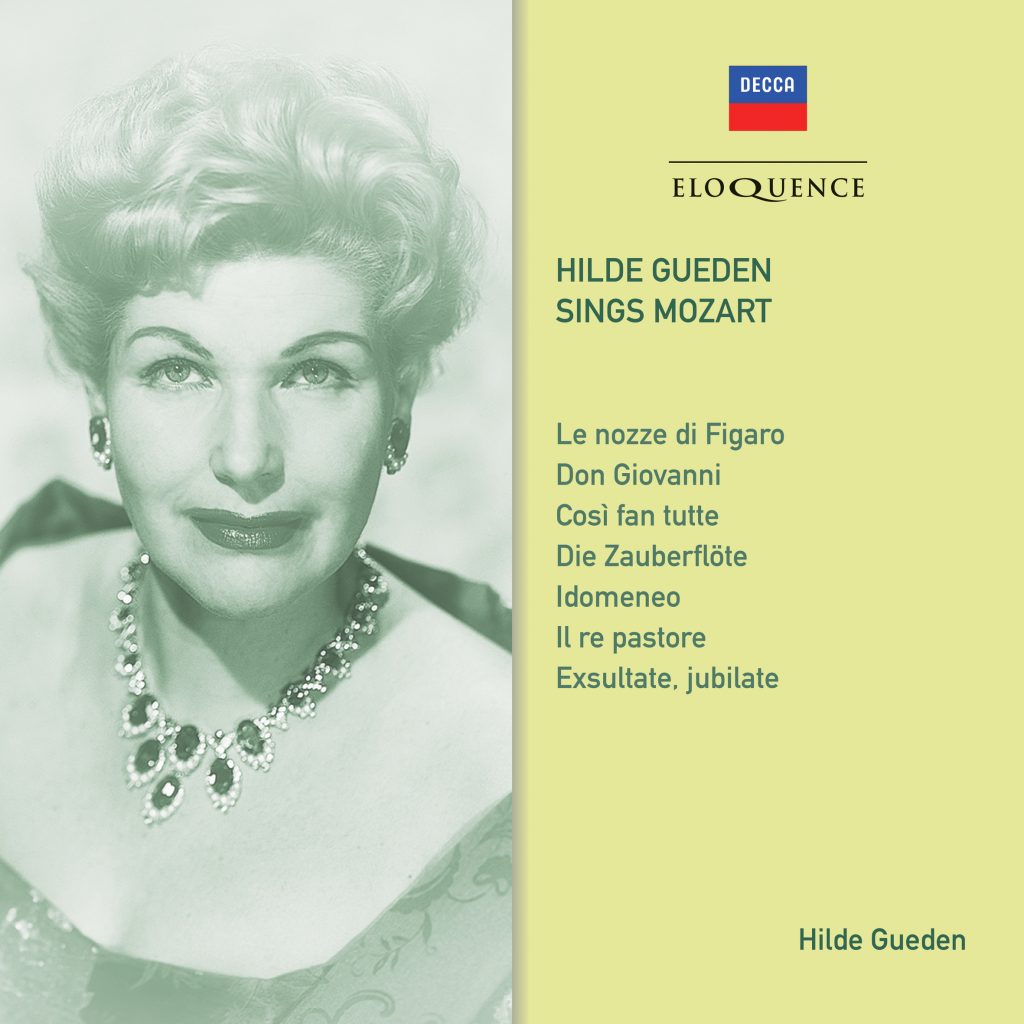Gifted with great beauty and a natural stage presence, Hilde Gueden was unfailingly easy on the ear as well as the eye. With her creamy tone and ability to spin the silvery upper-register sonority needed for her Strauss roles, she was a natural successor to Elisabeth Schumann, Lotte Schöne and Adele Kern. Fortunately for posterity, she recorded prolifically and in the LP era she worked mainly for Decca, taking part in many opera and operetta sets.
Most of the Mozart arias here were among Gueden’s first studio recordings. The first two were set down on her initial visit to London in 1947 with the LSO under Josef Krips and four more were made two years later with the same accompanists. All were intended for 78rpm release and four came out in that form; but two, overtaken by the arrival of 33rpm LPs, were not released until the CD era.
These Mozart portraits establish some of Gueden’s best qualities – the creamy tone, even from top to bottom, the rhythmic poise and the mercurial, sometimes cheeky personality. The late 1940s and 1950s in Vienna seem like a golden age of Mozart singing, and Hilde Gueden played her part in it.
WOLFGANG AMADEUS MOZART
Le nozze di Figaro: Non so più
Le nozze di Figaro: Deh vieni non tardar
Don Giovanni: Batti, batti
Don Giovanni: Vedrai, carino
Così fan tutte: In uomini
Così fan tutte: Una donna
London Symphony Orchestra
Josef Krips
Exsultate, jubilate, KV 16
Il re pastore: L’amerò, sarò costante
Die Zauberflöte: Ach, ich fühl’s
Le nozze di Figaro: Venite … inginocchiatevi
Wiener Philharmoniker
Alberto Erede
Le nozze di Figaro: Giunse alfin il momento … Deh vieni non tardar
Idomeneo: Se il padre perdei
Non temer, amato bene, KV 490
Le nozze di Figaro: Voi che sapete
Wiener Philharmoniker
Clemens Krauss
Le nozze di Figaro: Cosa mi narri … Canzonetta sull’aria
Lisa Della Casa, soprano
Wiener Philharmoniker
Erich Kleiber
Hilde Gueden, soprano
Recording Producers: Victor Olof (1–2, 7–17); unknown (3–6); Peter Andry (18)
Balance Engineers: Kenneth Wilkinson (1); Arthur Haddy (2); unknown (3–6); Cyril Windebank (7–17); James Brown (18)
Recording Locations: Kingsway Hall, London, UK, 14 October 1947 (1–2); London, UK, 11 April 1949 (3–6); Grosser Saal, Musikverein, Vienna, Austria, September 1951 (14–17); 19 May 1952 (7–10); September 1952 (11–13); Redoutensaal, Vienna, Austria, June 1955 (18)
Remastering Engineer: Chris Bernauer
‘“Voi che sapete” and “Deh vieni” are both given excellent performances, the latter with its recitative “Giunse alfin” and here Gueden is on her home ground … the recording is really excellent.’ Gramophone

